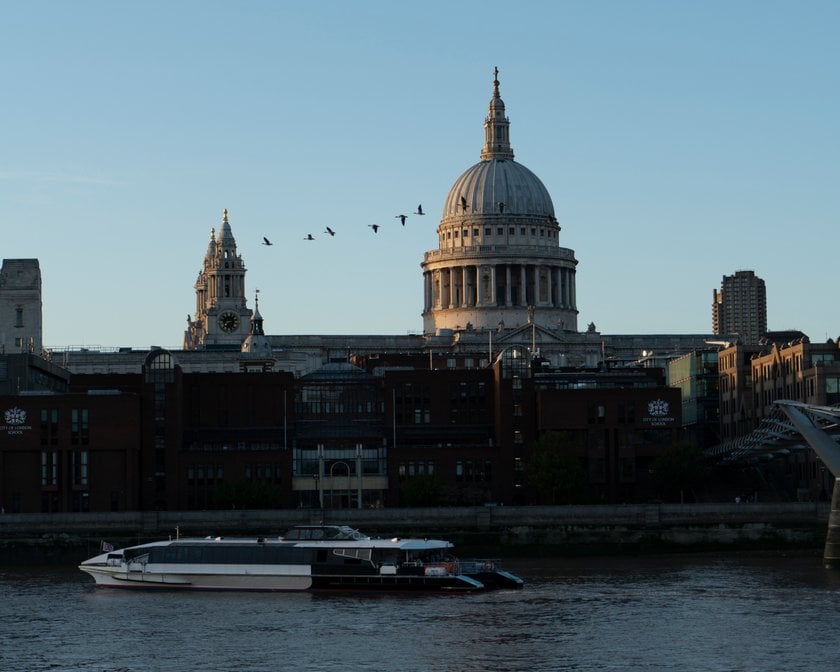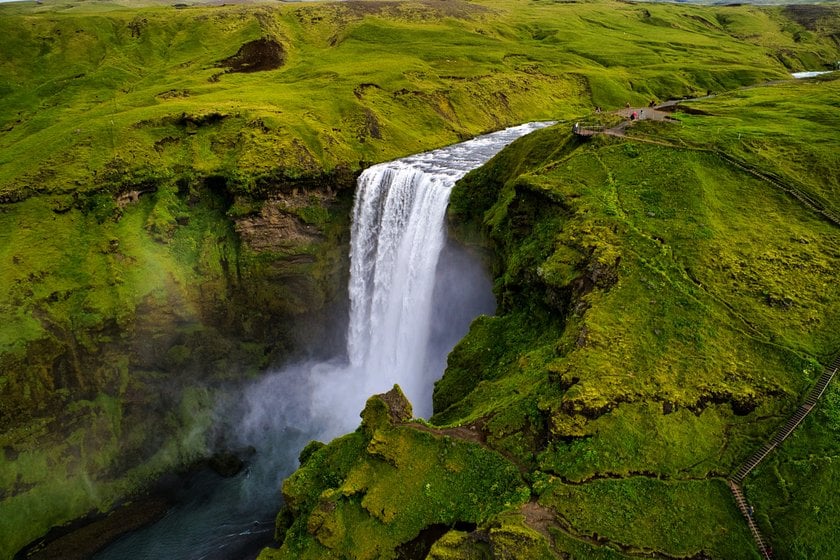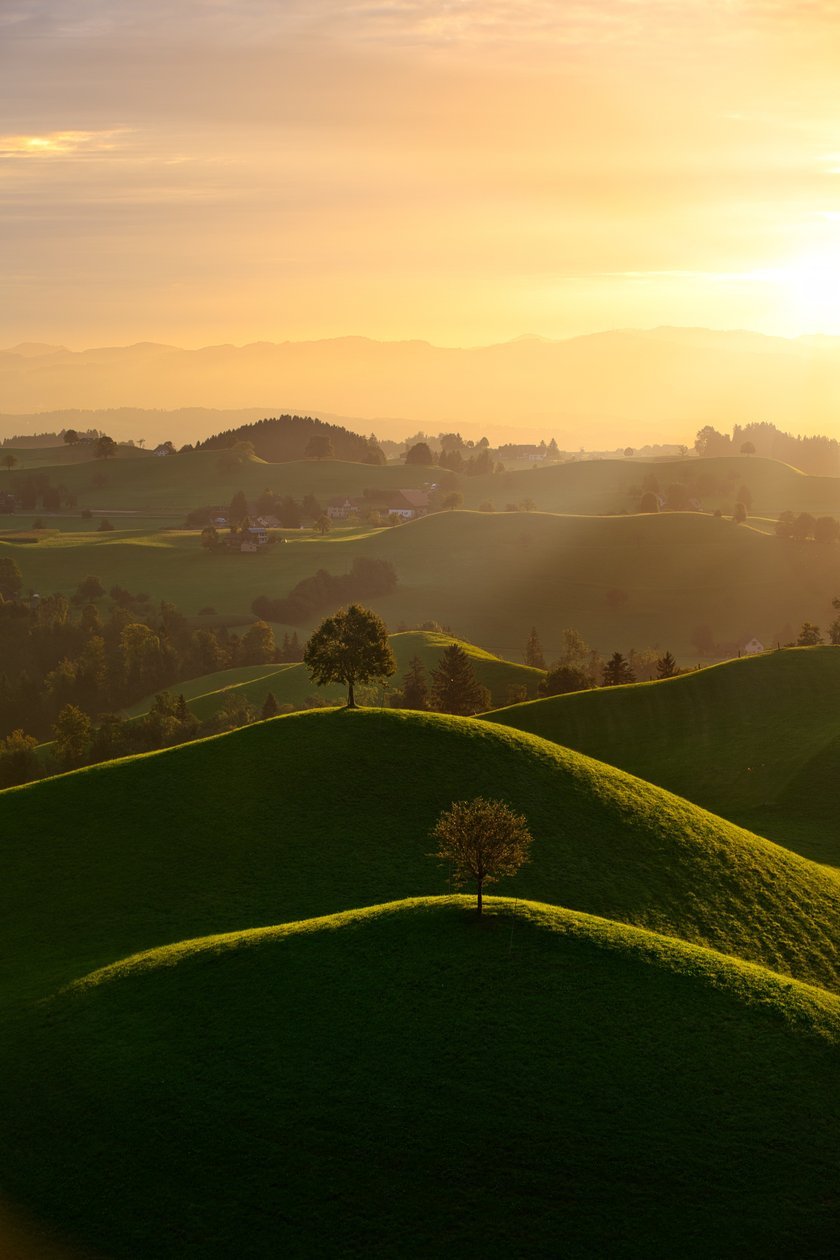December 22
20 min. to read
How to Become a Travel Photographer in 2026
Travel photography is captivating. Almost all of us love to travel and enjoy what nature has to offer, and when we do it, we love capturing those moments with a camera. Many people have turned this into a fulfilling career as travel photography is highly in demand.
These photos are used by travel agencies and other such organizations for several purposes, which is why there is a growing need for travel photographers. This means that having your own photography business is profitable in the long term.
We will tell you about the peculiarities of such work and how to be a travel photographer.
What Is Traveling Photography?
Travel photography is a niche of photography that includes traveling and making a documentary of landscapes, people, exotic spots, traditions, and societies.
The photographer travels to cities and countries and captures the experience through the camera's lens. The goal is to preserve all the most interesting and unique moments: sights, national food, nature, locals, and more.
As an example of professional photography, consider one of the most popular travel magazines, National Geographic. Many people wonder how to become a travel photographer for National Geographic. It's really important to have impressive work experience.
However, this field is so vast that even those who like to travel the world can start their way there. In addition, the Internet has made this genre of photography more available. Now everyone can create a travel blog and subscribe to like-minded people.
Moreover, you can choose what direction you want to work and develop.
Types of Travel Photographers
Once you've decided, "I want to be a travel photographer," you have many options. You can choose what you really like and move confidently along your career path.
The fact is that this genre encompasses many areas of photography:
- Street
- Architectural
- History
- Landscapes
- Festivals
- Food and Drink
- Lifestyle
- Nature
- Wildlife
In addition, each of the areas is divided into thematic areas. Here are a few examples. For instance, Street photography can be related to Portraits, Street Art, Daily Lives of residents. Landscape photography can be about Mountains, Deserts, Coastal, Forests, Water, etc.
Whichever option you choose, you will need certain skills and knowledge.
What Skills Do You Need to Be a Travel Photographer?
Working a flexible schedule and getting paid to travel sounds very appealing, don't you agree? But the question immediately arises: what do I need to do?
The following helps you achieve professional and financial success in this field:
Flexible planning
Travel work requires the ability to plan and make quick decisions. When you arrive in a new city, you won't have enough time to capture everything. Also, unforeseen events play a role.
It is essential that you can plan your shoot in advance. Also, always have a backup plan to adjust to changing circumstances and achieve your goal.
Ability to seize the moment
Because of limited time, you have to be ready to start work as soon as you arrive at your destination. If you are wondering how to be a freelance travel photographer, know that it is a constant adaptation to new places and non-standard conditions.
There is simply no time for a day's sleep after a flight or a leisurely acquaintance with the area. Working at this pace for the first time can be difficult, but it comes with experience.
Extensive knowledge
You don't have to be an expert in all areas. However, you do need to be able to capture the key highlights of a destination. This is especially important if you are photographing popular locations for travel agencies.
You should have a basic knowledge of how to take pictures under any conditions, such as low light or, conversely, bright sunlight.
Previsualization
This is one of the key skills of a photographer specializing in travel images. You have to create a picture in your head before you touch the camera. For example, imagine how a photo would look on the cover of a magazine combined with a headline.
Thus, previsualization must become one of your professional habits.
Photo processing skills
Don't neglect the editing stage if your goal is to create high-quality images. You will need the skills to use post-processing software solutions.
Thoroughly work on the details of your photos, even if at first glance everything looks perfect – one of the main travel photography tips.
Social skills
While traveling worldwide, you will meet local people with their own views of life and traditions. That's why you need to be able to connect with people, even without knowing their language.
Because photographers often travel alone, meeting and connecting with new people becomes even more important.
Willingness to travel
It seems so obvious. But it really is essential. Ask your colleague, "How do you become a travel photographer?" And you'll probably hear the answer that it all started with the love of traveling and exploring the world around you.
If you cherish traveling and you like taking pictures, then you can bring home the bacon by turning into a travel photographer. So, let's figure out how to become a traveling photographer and earn.
Here's a complete guide with the key steps you need to take to reach your goal.
How to Become a Freelance Travel Photographer: 9 Main Steps
Step 1. First Learn Photography
The first step is to learn photography. You need to be a photographer before you can be a travel photographer. You can do this on a special photography course.
You need to understand the basics of photography that includes:
- How to handle a camera
- How to use light and objects etc.
Travel photography can be fun and is a lot about lighting. For example, if you’re clicking a mountain, you need to be sure the sun is shining in the right direction so that the vision is clear.
All this you can learn before you become professional.
Step 2. Assist a Professional
The next step is to join hands with a professional travel photographer and see how they handle business.
There are many travel photographers out there, you need to find one who is looking for an assistant and is willing to go the extra mile to learn this art. This would allow you to travel and see things from the eye of a professional. There is no training like on-job training.
Step 3. Choose your niche
You can develop in a specific direction or theme. For example, capture incredible seascapes and photograph animals in the wild.
Don't want to be limited to one thing? Then partner with tour operators and create photos of tourist spots for them, from historical monuments to culinary delights, from seashores to festivals of national cultures.
Step 4. Cover Tourist Sites in Your Country
How to become a traveling photographer without traveling abroad? The best way to figure out how to swim is to jump into the swimming pool and learn it yourself. You cannot learn it without experiencing it. In this way, if you need to become a travel photographer, then you need to begin taking pictures of spots, people, events, and different occasions/locations.
You can begin with tourist sites in your country. Do they say discipline and practice bring about promising results and what better way of practicing than this? You can only gain experience if you practice it a lot.
Step 5. Pick The Right Camera
Professional photographers often use large, complex cameras, but for beginners or those on the go, lugging around an expensive camera might not be the best decision. It's essential to choose a camera with a good sensor; larger sensors usually produce higher-quality images.
And once you've captured those moments, proper editing is key. While there's a continuous debate in the photography community about Photoshop vs. Lightroom, we advise you to turn your attention to Luminar Neo. It's an all-in-one AI photo editing software that delivers top-notch results and is available for just $69. Contrary to popular belief, most travel photos you come across are edited, and there's absolutely nothing wrong in giving your photos that polished look.
Professional photographers utilize huge, complex cameras, but if you're a beginner, traveling with an expensive camera might not be a good choice.
Select a camera that has a good sensor because bigger sensors tend to create better-quality pictures. Speaking of better-quality pictures, it is also important to edit them appropriately. Luminar Neo is exclusive all-in-one AI photo editing software that packs a powerful punch and is accessible just for $69. Contrary to popular belief, travel photos you see are edited, and it is perfectly okay to do so.
Step 6. Research and Understand the Destination
Before heading out to capture a location, spend some time researching the place. Understand its history, culture, and major attractions. This not only helps you find unique angles and perspectives to shoot but also aids in telling a story through your photographs.
Step 7. Develop a Unique Style
Your photography style will set you apart from other photographers. Experiment with different angles, lighting, and compositions until you find a style that feels authentic to you. Over time, people will be able to recognize your work by your unique touch.
Step 8. Network and Build Relationships
Travel photography isn't just about taking pictures; it's about building relationships and understanding the dynamics of the industry, including photography prices. Join photography clubs, attend workshops, and connect with other photographers and travelers on social media. These relationships can lead to collaboration opportunities, referrals, and shared experiences that will enrich your journey.
Step 9: Capture and Craft Compelling Travel Content
The essence of travel photography lies in narrating a compelling story. When you're at a destination, look beyond the obvious. Dive deep into the local culture, engage with residents, and be observant of your surroundings. Capture moments that evoke emotion, be it the joy of a local festival or the serenity of a sunrise.
Once you've captured your images, spend time crafting and editing them. While there are various online photo editors available, they often can't match the precision and capabilities of dedicated software. Use photo editors like Luminar Neo to enhance and refine your shots, ensuring they convey the emotion and story you experienced in person. Remember, it's not just about capturing a beautiful scene but conveying its soul and essence to your audience.
Now you know how to become a travel photographer and get paid. But this may not be enough to get fame and attract the attention of a wide audience.
How to Promote Your Travel Photography
Build your portfolio
Start by creating an online portfolio of your best work. This is the first step to finding potential clients and motivating them to work with you.
Your portfolio should include photos of all the areas and topics you specialize in. Each interested user will be able to appreciate your work and determine how they are relevant to the project's specifics.
Create a website
The next step is to develop a photography website. This site will contain basic information about you: professional areas, experience, contacts for communication, and links to social networks. In other words, it is an opportunity to present yourself at your best.
What's more, you can bring your portfolio to the site. Create a separate page for each case, tell how the work was done, and add colorful examples.
For those curious about the earnings aspect of photography, you might want to check our article "How Much do Photographers Make" for a comprehensive insight.
Final words
So, how to become a paid travel photographer? First, learn the theoretical basics and gain valuable experience. Travel with an experienced photographer until you can work independently and promote your services.
Focus not only on the shooting process but also on post-processing, so you can always be sure of the quality of your photos!
FAQ
What are the required qualifications for becoming a travel photographer?
To become a travel photographer, one doesn't necessarily need formal qualifications. However, a strong portfolio is paramount, showcasing your unique photography skills and the ability to take pictures that captivate. Understanding the basics of photography is a given, and while many dive into this fulfilling career through self-learning and practice, enrolling in specialized courses can further enhance your credibility. If you're just starting, you might wonder how to embark on a photography career, especially in the travel niche. The answer often lies in a blend of passion for photography, hands-on practice, and perhaps a course to sharpen your expertise.
Are travel photographers compensated for their work?
Absolutely! Travel photographers can earn pay in various ways: they often sell their prints, collaborate with travel magazines or blogs, or even partner with travel agencies and tourism boards. However, it's not merely about taking pictures; professional photographers looking to make a steady income from this must have a combination of a compelling portfolio, networking skills, and a unique style that makes their work stand out. Remember, as much as you may like to travel, travel photographers must also be adept at selling their work to the right audience.
Does travel photography offer a viable professional path?
Yes, travel photography can pave the way for a highly rewarding professional path. But a passion for photography, while essential, is just the starting point. The journey to becoming a recognized travel photographer is highly competitive. Many budding photographers are eager to turn their love for travel into a career and often ponder how to get into travel photography. Success here requires more than just the ability to take pictures; it demands skill development, creating an impressive portfolio, and effective networking.
Is there a significant demand for travel photographers?
Certainly! With the rise of digital platforms and social media, there's been a surge in demand for unique and compelling travel photography. It's a popular photography genre. Travel agencies, magazines, blogs, and even companies in need of stock photos consistently seek high-quality travel images. But it's not just about being able to take pictures. Given the highly competitive nature of the field, aspiring photographers keen on making it big in travel photography need to offer a fresh perspective or a specialized niche. While the world might seem small in terms of travel opportunities, the realm of travel photography is vast, and those who can bring a unique touch will find clients who appreciate their work.




 >
>

